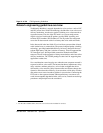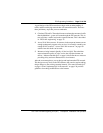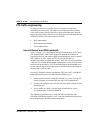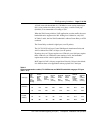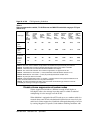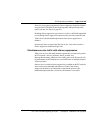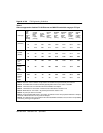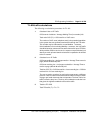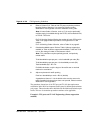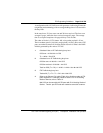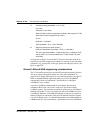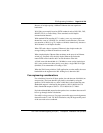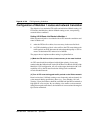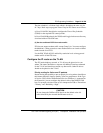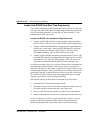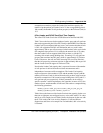
Page 82 of
378
ITG Engineering Guidelines
553-3001-202 Standard 1.00 April 2000
4 Refer to Poisson P.01 Table to find ITG ports required to provide a
blocking Grade of Service of 1% assuming Poisson random
distribution of call origination and zero correlation among calls.
Note:
A lower Grade of Service, such as P.10, may be preferred if
overflow routing is available through the PSTN, circuit-switched VPN,
or ITG ISL TIE trunks.
For P.01 blocking Grade of Service the number of trunks (ITG ports) in
Table 12 on page 94 which provides a CCS higher than T is the
solution.
For P.10 blocking Grade of Service, refer to Table 13 on page 95.
5 Calculate bandwidth output. Refer to Table 5 (silence suppression
enabled) or Table 6 (silence suppression disabled). Tv/36 and Tx/36
indicate the average number of simultaneous callers.
Note:
This calculation requires perfectly queued, and perfectly
smooth traffic.
Tv/36*bandwidth output per port = voice bandwidth per node (Bv)
Tx/36*bandwidth output per port = fax bandwidth per node (Bx)
Total bandwidth (Bt) = Bv + Bx
For WAN calculation, only the larger of fax traffic sent or received
needs to be considered.
6 Adjust requirement for traffic peaking
Peak hour bandwidth per node = Bt*1.3 (default)
A peakedness factor of 1.3 is the default value used to account for
traffic fluctuation in the busy hour due to non-queued, Poisson random
distribution of call originations.
The procedure shown here is for ITG port and T-LAN data requirement
calculation. In the WAN environment, traffic parcel is defined per destination
pair (route). The total node traffic should be sub-divided into destination pair
traffic. The rest of calculation procedure continues to be applicable.
Example 1: ITG ports and T-LAN Engineering (silence suppression
enabled)



